Quality Assessment of Greenhouse-Cultivated Cucumbers (Cucumis sativus) during Storage Using Instrumental and Image Analyses
Abstract
1. Introduction
2. Materials and Methods
2.1. Cucumber Samples
2.2. Image Analysis
2.3. Physicochemical Measurements
2.4. Attenuated Total Reflectance–Fourier Transform Infrared Spectroscopy (ATR-FTIR)
2.5. Spectrophotometric Assays of Cucumber Peel Phenolic Extract
2.6. Machine Learning/Discriminant Analysis
2.7. Statistical Analysis and Regression Models
3. Results and Discussion
3.1. Image Texture and Color Assessment of the Outer Surfaces of Cucumber Peels during Storage
3.2. ATR-FTIR Spectra Interpretation of the Outer Surfaces of Cucumber Peels
3.3. Spectrophotometric Assays in Cucumber Peel Samples during Storage
3.4. Physicochemical Parameters of Cucumber Flesh during Storage
3.5. Discriminant Analysis
3.5.1. Analysis Discrimination
3.5.2. Internal Physicochemical Characteristics/Texture Analysis
3.5.3. ATR-FTIR Discriminant Analysis
3.6. Regression Analysis
4. Conclusions
Author Contributions
Funding
Institutional Review Board Statement
Informed Consent Statement
Data Availability Statement
Acknowledgments
Conflicts of Interest
References
- Food and Agriculture Organization. FAOSTAT. Available online: https://www.fao.org/home/en/ (accessed on 1 June 2024).
- Wdowikowska, A.; Reda, M.; Kabała, K.; Chohura, P.; Jurga, A.; Janiak, K.; Janicka, M. Water and Nutrient Recovery for Cucumber Hydroponic Cultivation in Simultaneous Biological Treatment of Urine and Grey Water. Plants 2023, 12, 1286. [Google Scholar] [CrossRef] [PubMed]
- Sotiroudis, G.; Melliou, E.; Sotiroudis, T.G.; Chinou, I. Chemical analysis, antioxidant and antimicrobial activity of three Greek cucumber (Cucumis sativus) cultivars. J. Food Biochem. 2010, 34, 61–78. [Google Scholar] [CrossRef]
- Uthpala, T.G.; Marapana, R.A.U.; Lakmini, K.P.; Wettimuny, D.C. Nutritional Bioactive Compounds and Health Benefits of Fresh and Processed Cucumber (Cucumis sativus L.). Sumerianz J. Biotechnol. 2020, 3, 75–82. [Google Scholar] [CrossRef]
- Kaur, P.; Devgan, K.; Kumar, N.; Kaur, A.; Kumar, M.; Sandhu, K. Quality retention and shelf-life prolongation of cucumbers (Cucumis sativus L.) under different cool storage systems with passive modified atmosphere bulk packaging. Packag. Technol. Sci. 2021, 34, 567–578. [Google Scholar] [CrossRef]
- Mukherjee, P.K.; Nema, N.K.; Maity, N.; Sarkar, B.K. Phytochemical and therapeutic potential of cucumber. Fitoterapia 2013, 84, 227–236. [Google Scholar] [CrossRef] [PubMed]
- Jahan, S.E.; Hassan, M.K.; Roy, S.; Ahmed, Q.M.; Hasan, G.N.; Muna, A.Y.; Sarkar, M.N. Effects of different postharvest treatments on nutritional quality and shelf life of cucumber. Asian J. Crop Soil Plan. Nutr. 2020, 2, 51–61. [Google Scholar] [CrossRef]
- Eskin, M. Quality and Preservation of Vegetables, 1st ed.; Eskin, N.A.M., Ed.; CRC Press: Boca Raton, FL, USA, 2021; ISBN 978-1-00-321038-2. [Google Scholar]
- Chen, C.; Zhou, G.; Chen, J.; Liu, X.; Lu, X.; Chen, H.; Tian, Y. Integrated Metabolome and Transcriptome Analysis Unveils Novel Pathway Involved in the Formation of Yellow Peel in Cucumber. Int. J. Mol. Sci. 2021, 22, 1494. [Google Scholar] [CrossRef]
- Kevers, C.; Falkowski, M.; Tabart, J.; Defraigne, J.-O.; Dommes, J.; Pincemail, J. Evolution of Antioxidant Capacity during Storage of Selected Fruits and Vegetables. J. Agric. Food Chem. 2007, 55, 8596–8603. [Google Scholar] [CrossRef]
- Thirupathi Vasuki, M.; Kadirvel, V.; Pejavara Narayana, G. Smart packaging—An overview of concepts and applications in various food industries. Food Bioeng. 2023, 2, 25–41. [Google Scholar] [CrossRef]
- Sinanoglou, V.J.; Tsiaka, T.; Aouant, K.; Mouka, E.; Ladika, G.; Kritsi, E.; Konteles, S.J.; Ioannou, A.-G.; Zoumpoulakis, P.; Strati, I.F.; et al. Quality Assessment of Banana Ripening Stages by Combining Analytical Methods and Image Analysis. Appl. Sci. 2023, 13, 3533. [Google Scholar] [CrossRef]
- Ladika, G.; Strati, I.F.; Tsiaka, T.; Cavouras, D.; Sinanoglou, V.J. On the Assessment of Strawberries’ Shelf-Life and Quality, Based on Image Analysis, Physicochemical Methods, and Chemometrics. Foods 2024, 13, 234. [Google Scholar] [CrossRef] [PubMed]
- Giannakourou, M.C.; Stavropoulou, N.; Tsironi, T.; Lougovois, V.; Kyrana, V.; Konteles, S.J.; Sinanoglou, V.J. Application of hurdle technology for the shelf life extension of European eel (Anguilla anguilla) fillets. Aquac. Fish. 2023, 8, 393–402. [Google Scholar] [CrossRef]
- Andreou, V.; Strati, I.F.; Fotakis, C.; Liouni, M.; Zoumpoulakis, P.; Sinanoglou, V.J. Herbal distillates: A new era of grape marc distillates with enriched antioxidant profile. Food Chem. 2018, 253, 171–178. [Google Scholar] [CrossRef]
- Lantzouraki, D.Z.; Sinanoglou, V.J.; Zoumpoulakis, P.G.; Glamočlija, J.; Ćirić, A.; Soković, M.; Heropoulos, G.; Proestos, C. Antiradical–antimicrobial activity and phenolic profile of pomegranate (Punica granatum L.) juices from different cultivars: A comparative study. RSC Adv. 2015, 5, 2602–2614. [Google Scholar] [CrossRef]
- Lantzouraki, D.Z.; Sinanoglou, V.J.; Zoumpoulakis, P.; Proestos, C. Comparison of the Antioxidant and Antiradical Activity of Pomegranate (Punica granatum L.) by Ultrasound-Assisted and Classical Extraction. Anal. Lett. 2016, 49, 969–978. [Google Scholar] [CrossRef]
- Manninen, H.; Paakki, M.; Hopia, A.; Franzén, R. Measuring the green color of vegetables from digital images using image analysis. LWT-Food Sci. Technol. 2015, 63, 1184–1190. [Google Scholar] [CrossRef]
- Ebrahimi, P.; Shokramraji, Z.; Tavakkoli, S.; Mihaylova, D.; Lante, A. Chlorophylls as Natural Bioactive Compounds Existing in Food By-Products: A Critical Review. Plants 2023, 12, 1533. [Google Scholar] [CrossRef]
- Trong, L.V.; Phuong, H.T.; Thinh, B.B. Changes in the Physiological and Biochemical Parameters of Cucumber (Cucumis sativus L.) during Fruit Development. FWIAFE 2023, 16, 143–154. [Google Scholar] [CrossRef]
- Subhashree, S.N.; Sunoj, S.; Xue, J.; Bora, G.C. Quantification of browning in apples using colour and textural features by image analysis. Food Qual. Saf. 2017, 1, 221–226. [Google Scholar] [CrossRef]
- Meenu, M.; Kurade, C.; Neelapu, B.C.; Kalra, S.; Ramaswamy, H.S.; Yu, Y. A concise review on food quality assessment using digital image processing. Trends Food Sci. Technol. 2021, 118, 106–124. [Google Scholar] [CrossRef]
- Palumbo, M.; Cefola, M.; Pace, B.; Attolico, G.; Colelli, G. Computer vision system based on conventional imaging for non-destructively evaluating quality attributes in fresh and packaged fruit and vegetables. Postharvest Biol. Technol. 2023, 200, 112332. [Google Scholar] [CrossRef]
- Kritsi, E.; Ladika, G.; Stavropoulou, N.A.; Oikonomakou, M.; Ioannou, A.-G.; Christodoulou, P.; Konteles, S.J.; Cavouras, D.; Sinanoglou, V.J. Evaluation of the Quality Changes in Three Commercial Pastourma Samples during Refrigerated Storage Using Physicochemical, Microbiological, and Image Analyses Combined with Chemometrics. Foods 2024, 13, 1017. [Google Scholar] [CrossRef] [PubMed]
- Kozłowicz, K.; Różyło, R.; Gładyszewska, B.; Matwijczuk, A.; Gładyszewski, G.; Chocyk, D.; Samborska, K.; Piekut, J.; Smolewska, M. Identification of sugars and phenolic compounds in honey powders with the use of GC–MS, FTIR spectroscopy, and X-ray diffraction. Sci. Rep. 2020, 10, 16269. [Google Scholar] [CrossRef] [PubMed]
- Nandiyanto, A.B.D.; Oktiani, R.; Ragadhita, R. How to Read and Interpret FTIR Spectroscope of Organic Material. Indones. J. Sci. Technol. 2019, 4, 97. [Google Scholar] [CrossRef]
- Ajayi, A.A.; Vining-Ogu, I.C.; Akalonu, X.C.; Danladi, J.G.; Briggs, T.A.; Chukwu-Eze, U.S. Evaluation of Selected Organic Acids in some common Fruits Cucumber, Water Melon, Soursop in Ebonyi State, Nigeria. Int. J. Res. Innov. Appl. Sci. 2023, 8, 15–18. Available online: https://www.rsisinternational.org/journals/ijrias/DigitalLibrary/volume-8-issue-1/15-18.pdf (accessed on 12 September 2024).
- Abdul Hakim, B.N.; Xuan, N.J.; Oslan, S.N.H. A Comprehensive Review of Bioactive Compounds from Lactic Acid Bacteria: Potential Functions as Functional Food in Dietetics and the Food Industry. Foods 2023, 12, 2850. [Google Scholar] [CrossRef]
- Hong, T.; Yin, J.-Y.; Nie, S.-P.; Xie, M.-Y. Applications of infrared spectroscopy in polysaccharide structural analysis: Progress, challenge and perspective. Food Chem. X 2021, 12, 100168. [Google Scholar] [CrossRef]
- Wiercigroch, E.; Szafraniec, E.; Czamara, K.; Pacia, M.Z.; Majzner, K.; Kochan, K.; Kaczor, A.; Baranska, M.; Malek, K. Raman and infrared spectroscopy of carbohydrates: A review. Spectrochim. Acta Part A Mol. Biomol. Spectrosc. 2017, 185, 317–335. [Google Scholar] [CrossRef]
- John, S.; Priyadarshini, S.; Monica, S.J.; Sivaraj, C.; Arumugam, P. In vitro antioxidant and antimicrobial properties of cucumis sativus l. peel extracts. Int. Res. J. Pharm. 2018, 9, 56–60. [Google Scholar] [CrossRef]
- Balouchi, Z. Changes of antioxidant compounds of broccoli (Brassica oleracea L.Var. Italica) during storage at low and high temperatures. South West. J. Hortic. Biol. Environ. 2011, 2, 193–212. [Google Scholar]
- Muralidhara, B.M.; Veena, G.L.; Rajan, S.; Bhattacherjee, A.K.; Malav, P.K. Effect of post harvest ripening on bioactive secondary metabolites and antioxidant activity in mango cv. Amrapali. J. Hortic. Sci. 2018, 13, 152–158. [Google Scholar] [CrossRef]
- Bilgin, Ö.F.; Nogay, G.; Kafkas, N.E.; Kafkas, S. Some Fruit Quality Characteristics of ‘Grand Naine’ Banana Fruits during Various Ripening Stages. Int. J. Agric. For. Life Sci. 2022, 6, 24–27. [Google Scholar]
- Kritsi, E.; Tsiaka, T.; Sotiroudis, G.; Mouka, E.; Aouant, K.; Ladika, G.; Zoumpoulakis, P.; Cavouras, D.; Sinanoglou, V.J. Potential Health Benefits of Banana Phenolic Content during Ripening by Implementing Analytical and In Silico Techniques. Life 2023, 13, 332. [Google Scholar] [CrossRef]
- Al-Hadrami, A.; Pathare, P.B.; Al-Dairi, M.; Al-Mahdouri, A. Investigation of Bruise Damage and Storage on Cucumber Quality. AgriEngineering 2023, 5, 855–875. [Google Scholar] [CrossRef]
- Adamicki, F. Effects of storage temperature and wrapping on the keeping quality of cucumber fruits. Acta Hortic. 1985, 156, 269–272. [Google Scholar] [CrossRef]
- Wang, J.; Zhao, Y.; Ma, Z.; Zheng, Y.; Jin, P. Hydrogen Sulfide Treatment Alleviates Chilling Injury in Cucumber Fruit by Regulating Antioxidant Capacity, Energy Metabolism and Proline Metabolism. Foods 2022, 11, 2749. [Google Scholar] [CrossRef]
- Matsui, T.; Kosugi, Y.; Miki, E. Postharvest changes in the activities of sugar-metabolizing enzymes in cucumber fruit stored at different temperatures. Food Preserv. Sci. 2008, 34, 133–138. [Google Scholar] [CrossRef]
- Dhall, R.K.; Sharma, S.R.; Mahajan, B.V.C. Effect of shrink wrap packaging for maintaining quality of cucumber during storage. J. Food Sci. Technol. 2012, 49, 495–499. [Google Scholar] [CrossRef]
- Eboibi, O.; Uguru, H. Storage conditions effect on physic-mechanical properties of Nandini cucumber. Int. J. Eng. Technol. Res. 2017, 7, 264925. [Google Scholar]
- Pan, Y.; Li, X.; Jia, X.; Zhao, Y.; Li, H.; Zhang, L. Storage temperature without fluctuation enhances shelf-life and improves postharvest quality of peach. J. Food Process Preserv. 2019, 43, e13881. [Google Scholar] [CrossRef]
- Xu, R.; Chen, Q.; Zhang, Y.; Li, J.; Zhou, J.; Wang, Y.; Chang, H.; Meng, F.; Wang, B. Research on Flesh Texture and Quality Traits of Kiwifruit (cv. Xuxiang) with Fluctuating Temperatures during Cold Storage. Foods 2023, 12, 3892. [Google Scholar] [CrossRef] [PubMed]
- Wang, X.; Chen, J.; Luo, D.; Ba, L. Advances in the Understanding of Postharvest Physiological Changes and the Storage and Preservation of Pitaya. Foods 2024, 13, 1307. [Google Scholar] [CrossRef] [PubMed]
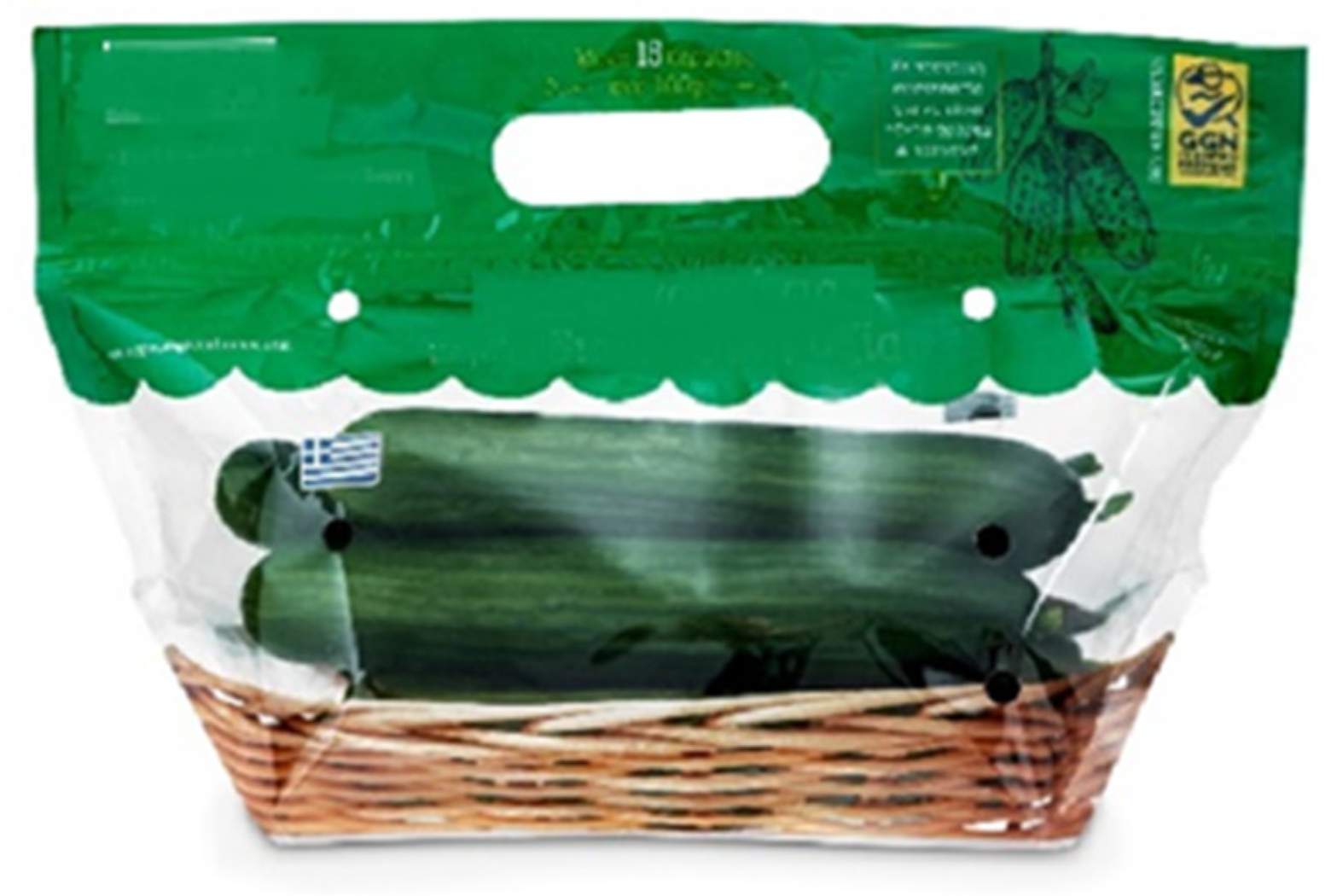
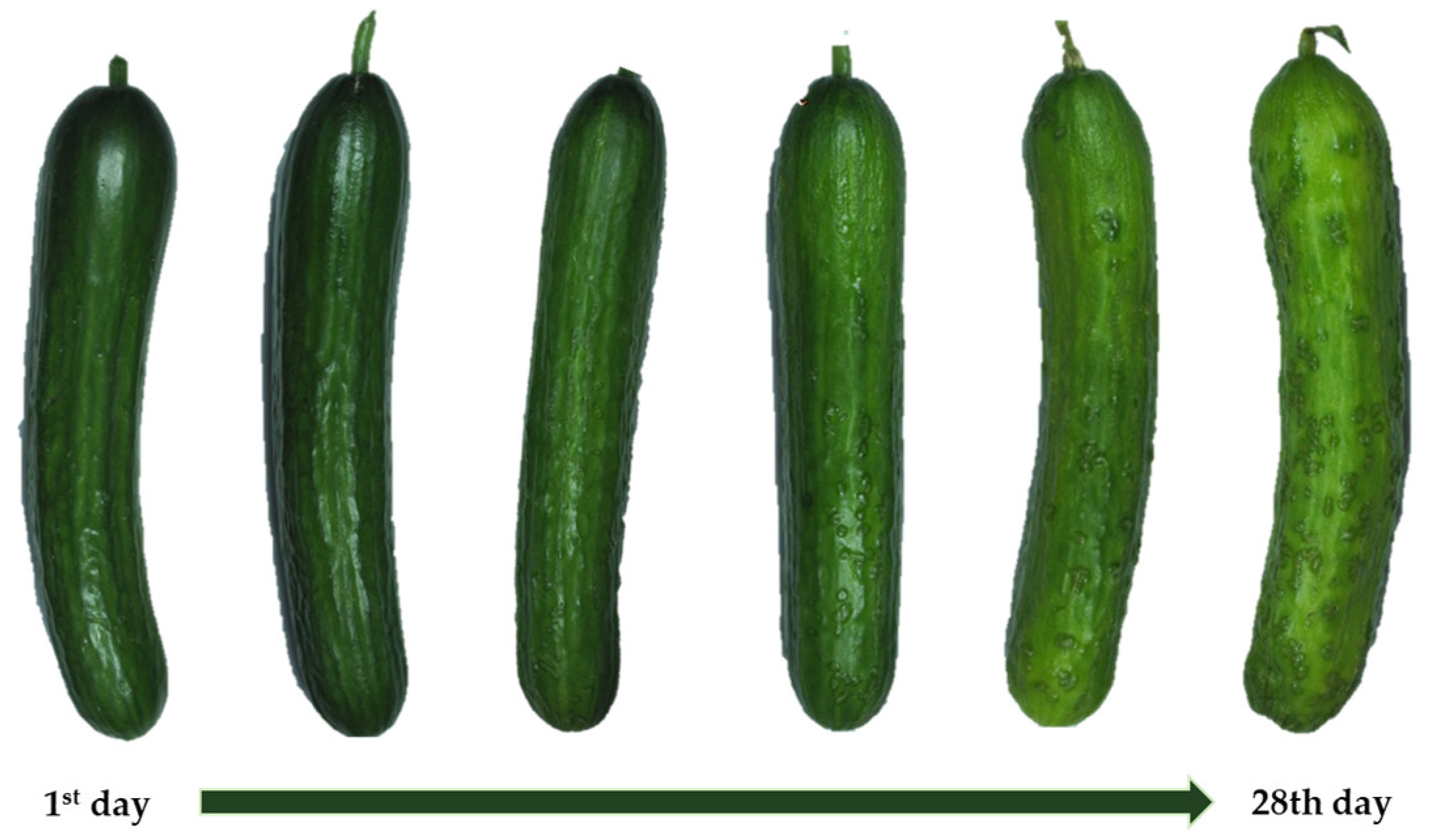
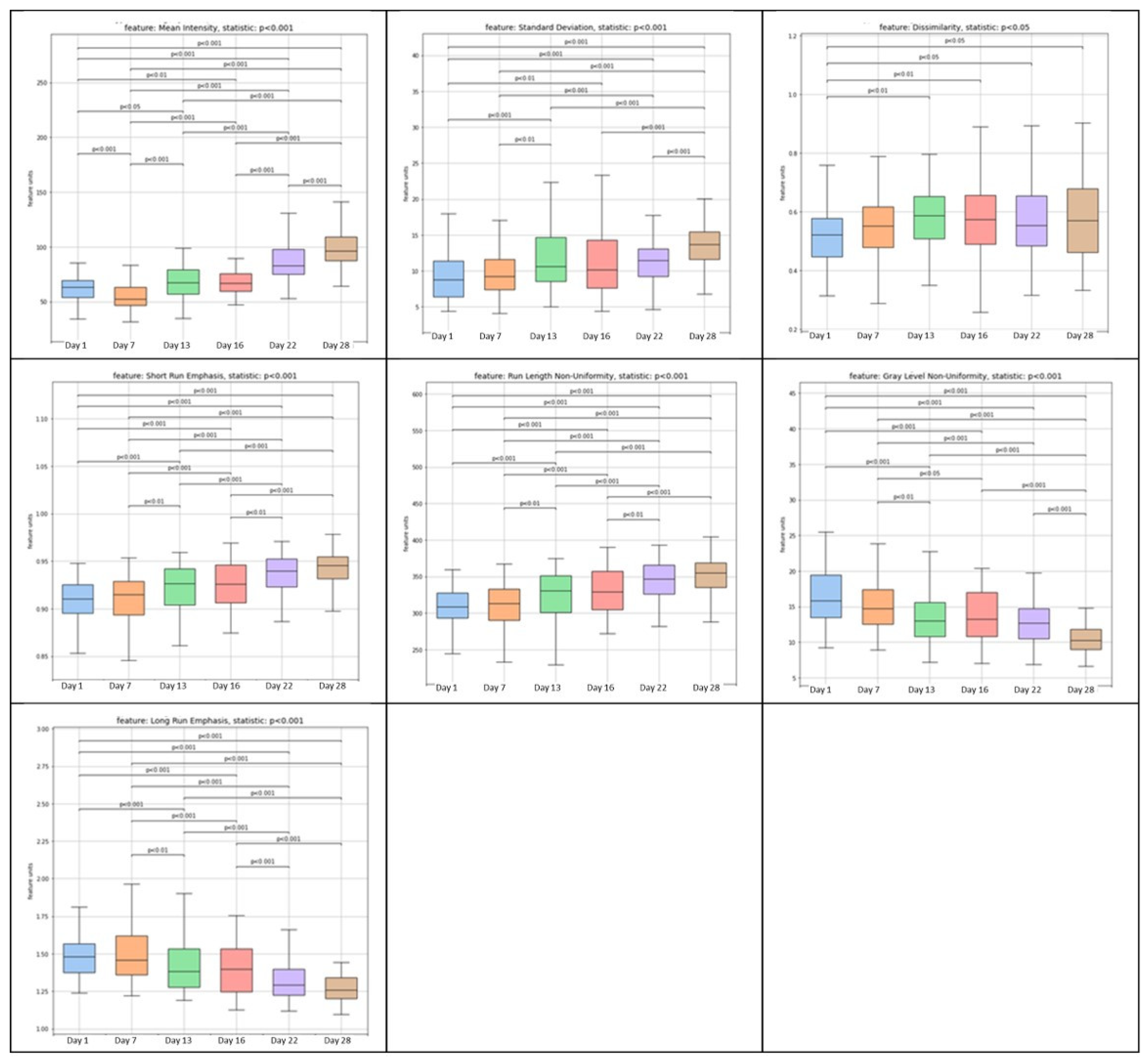
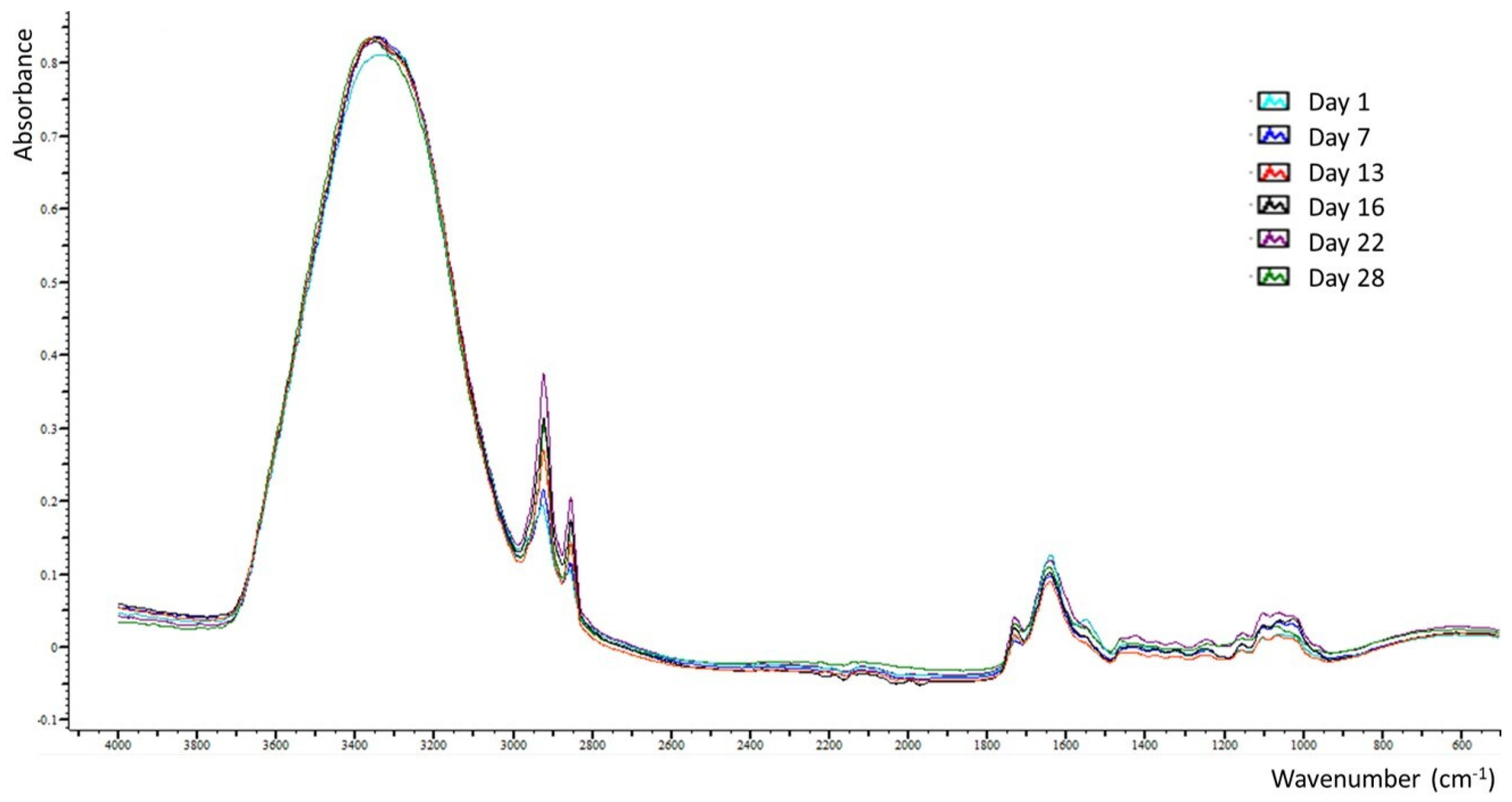
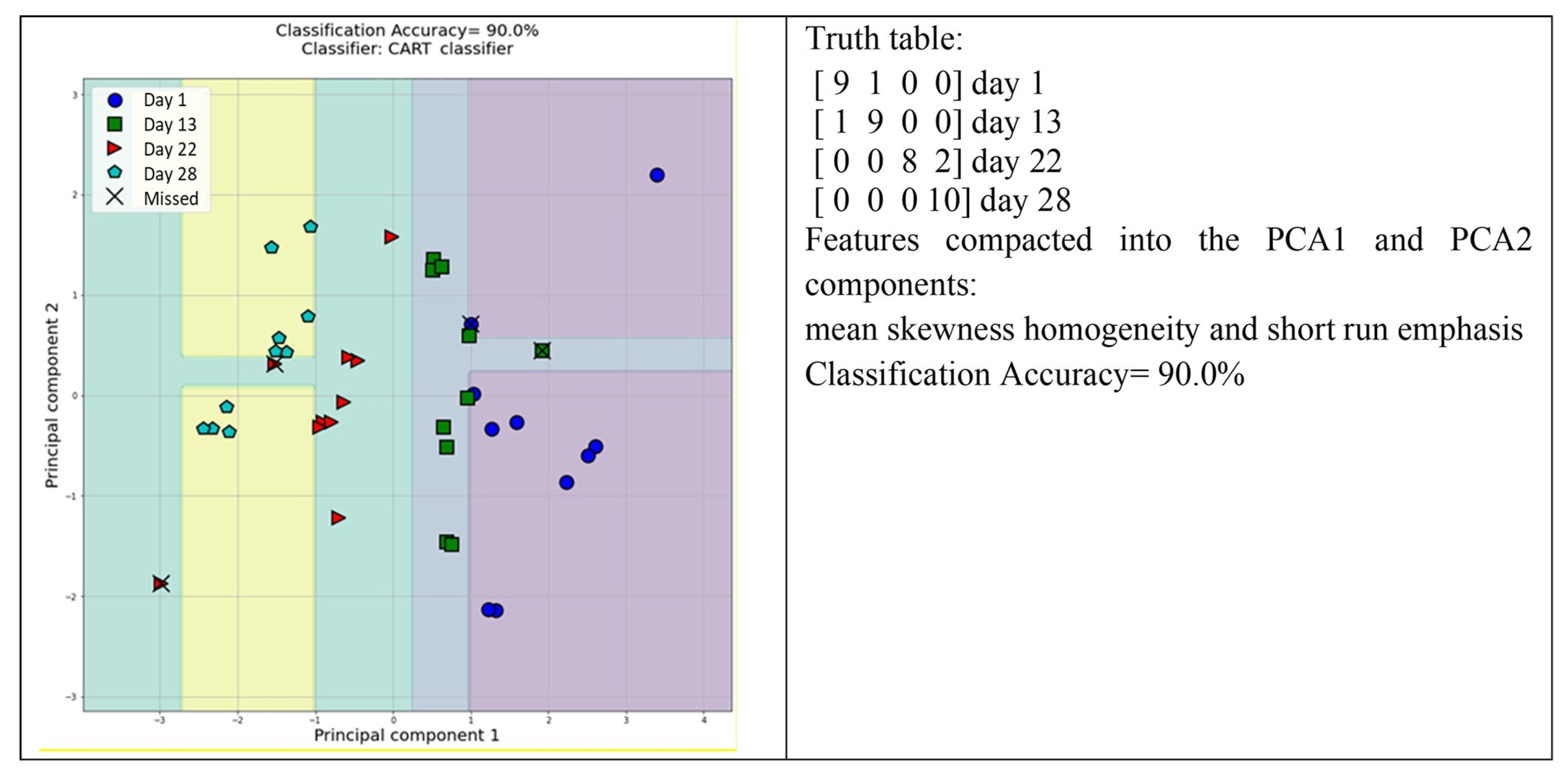
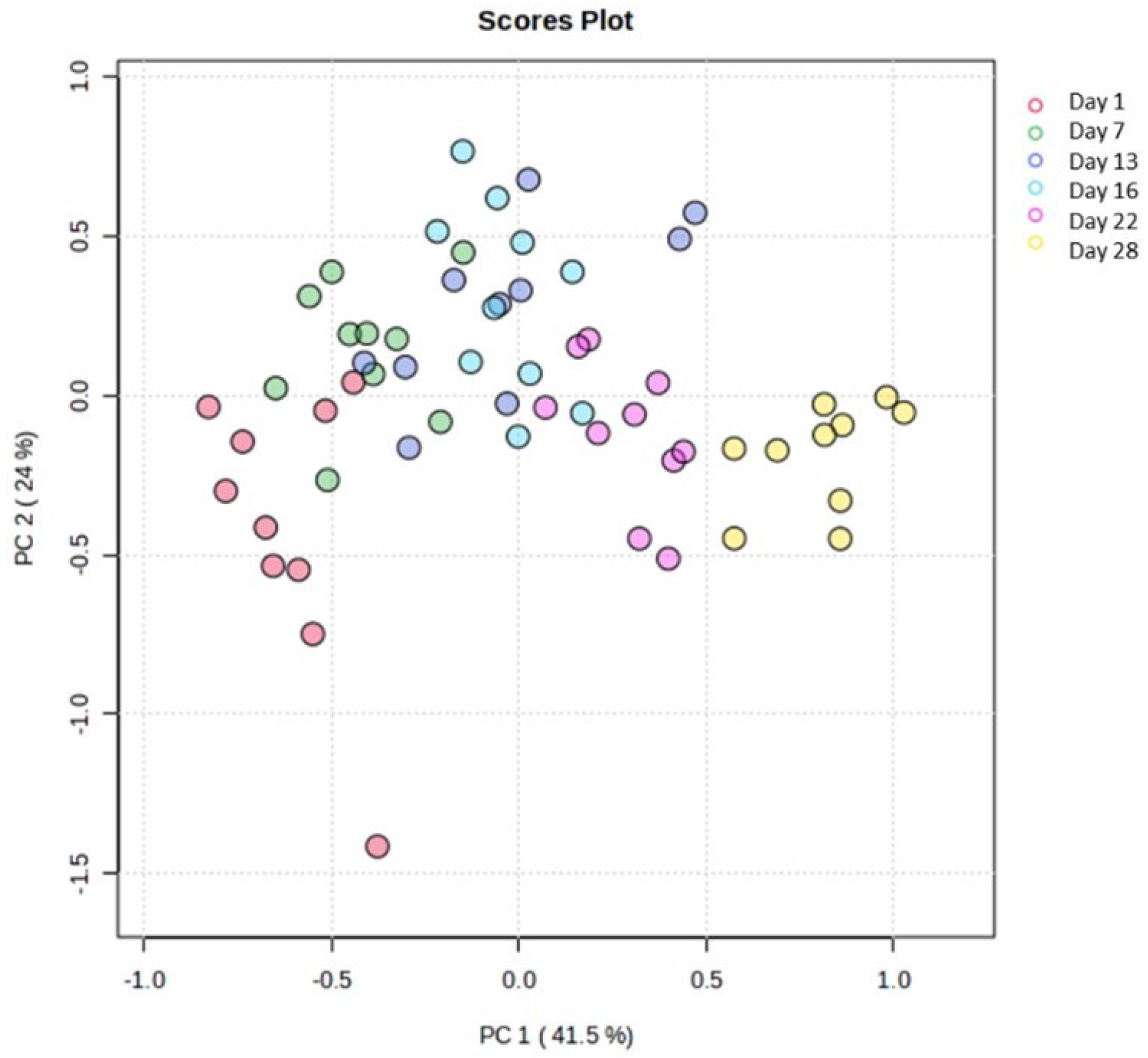
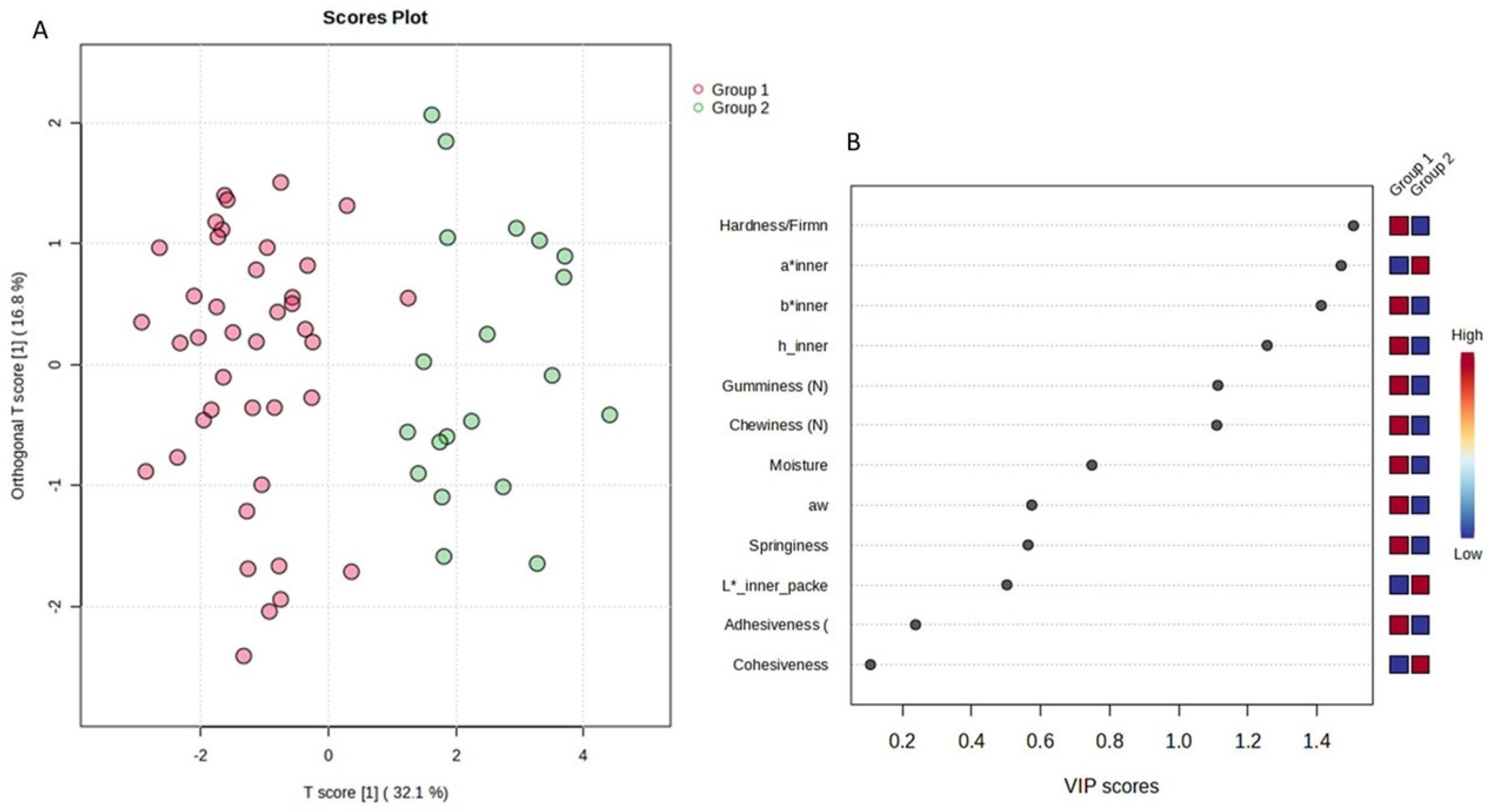
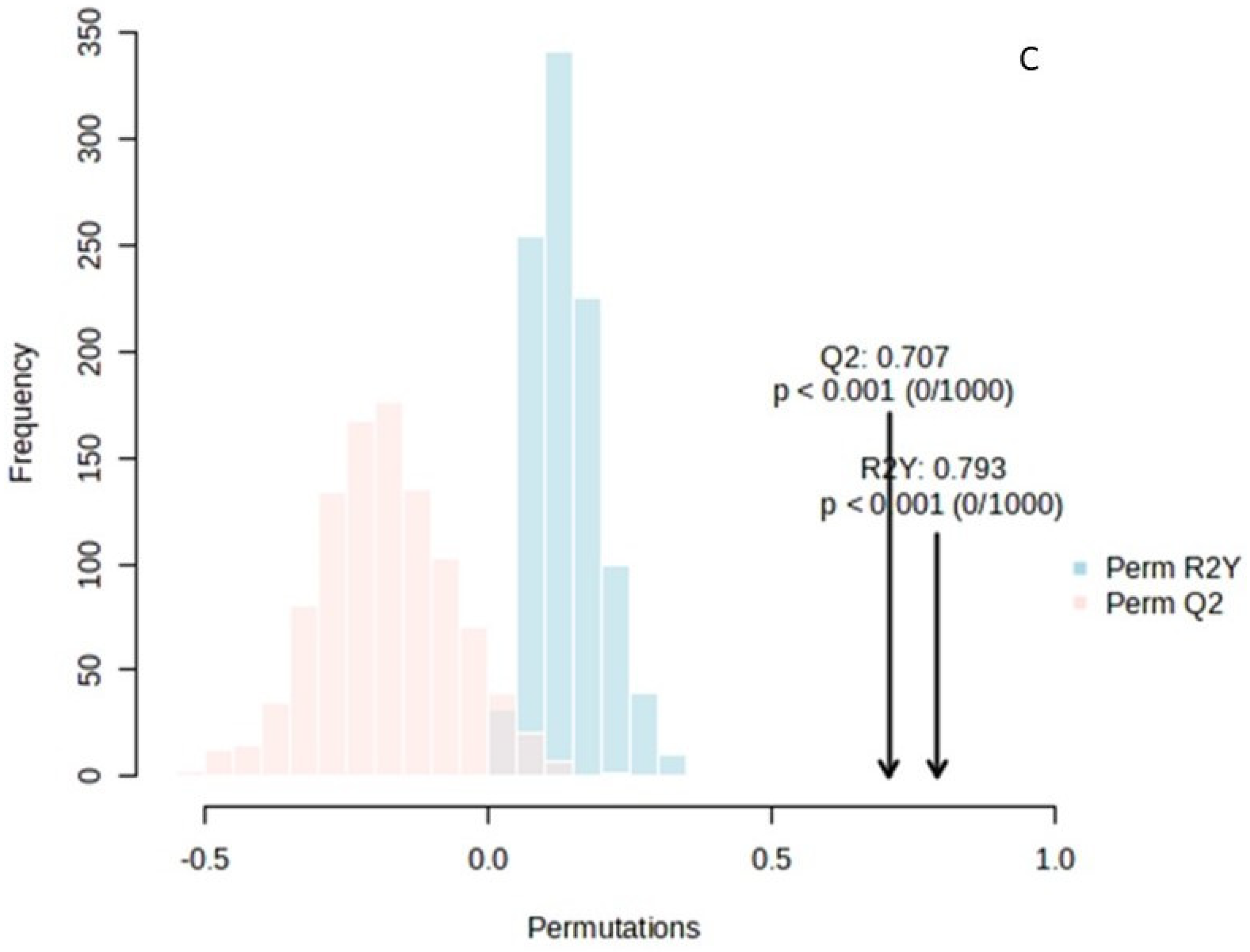

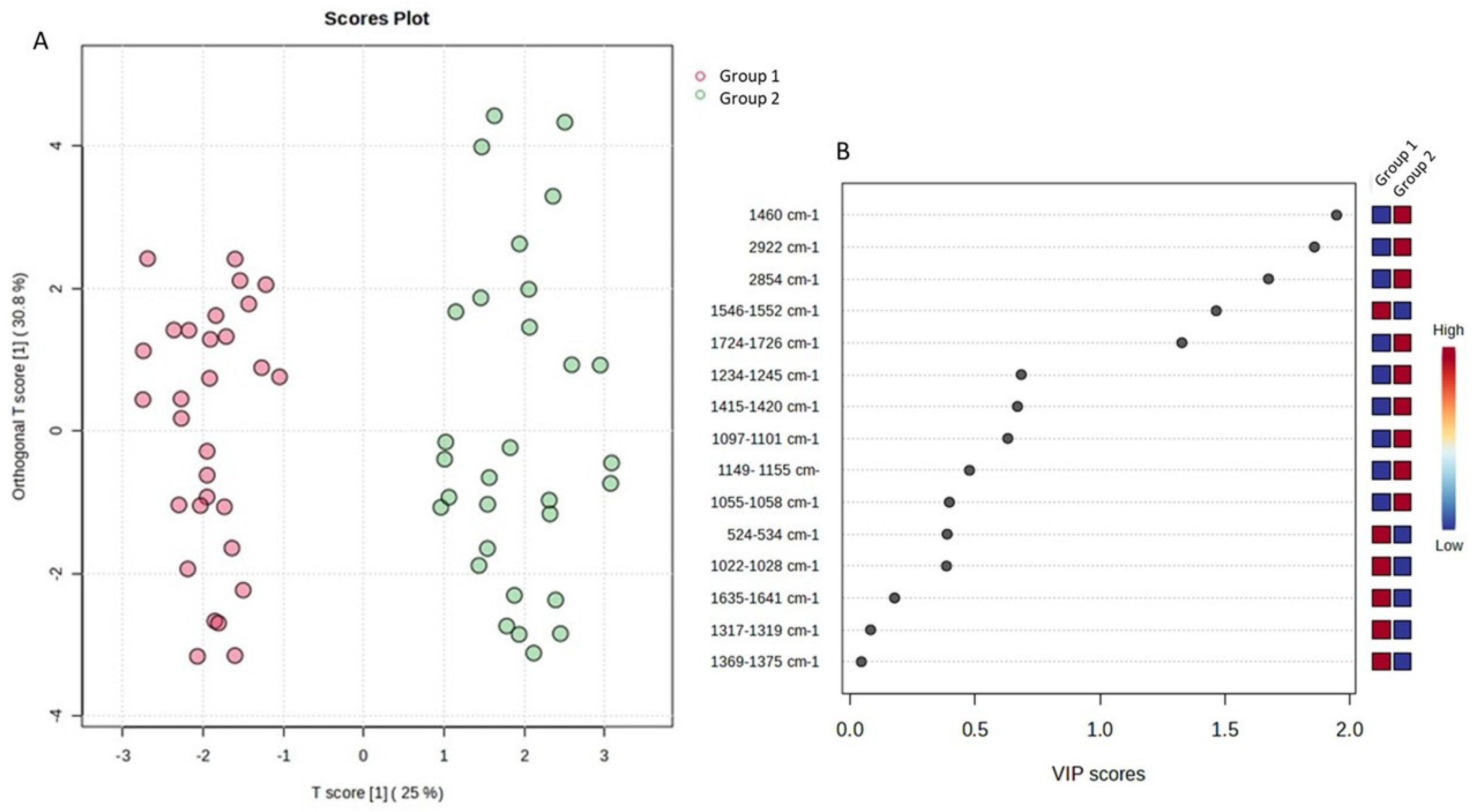
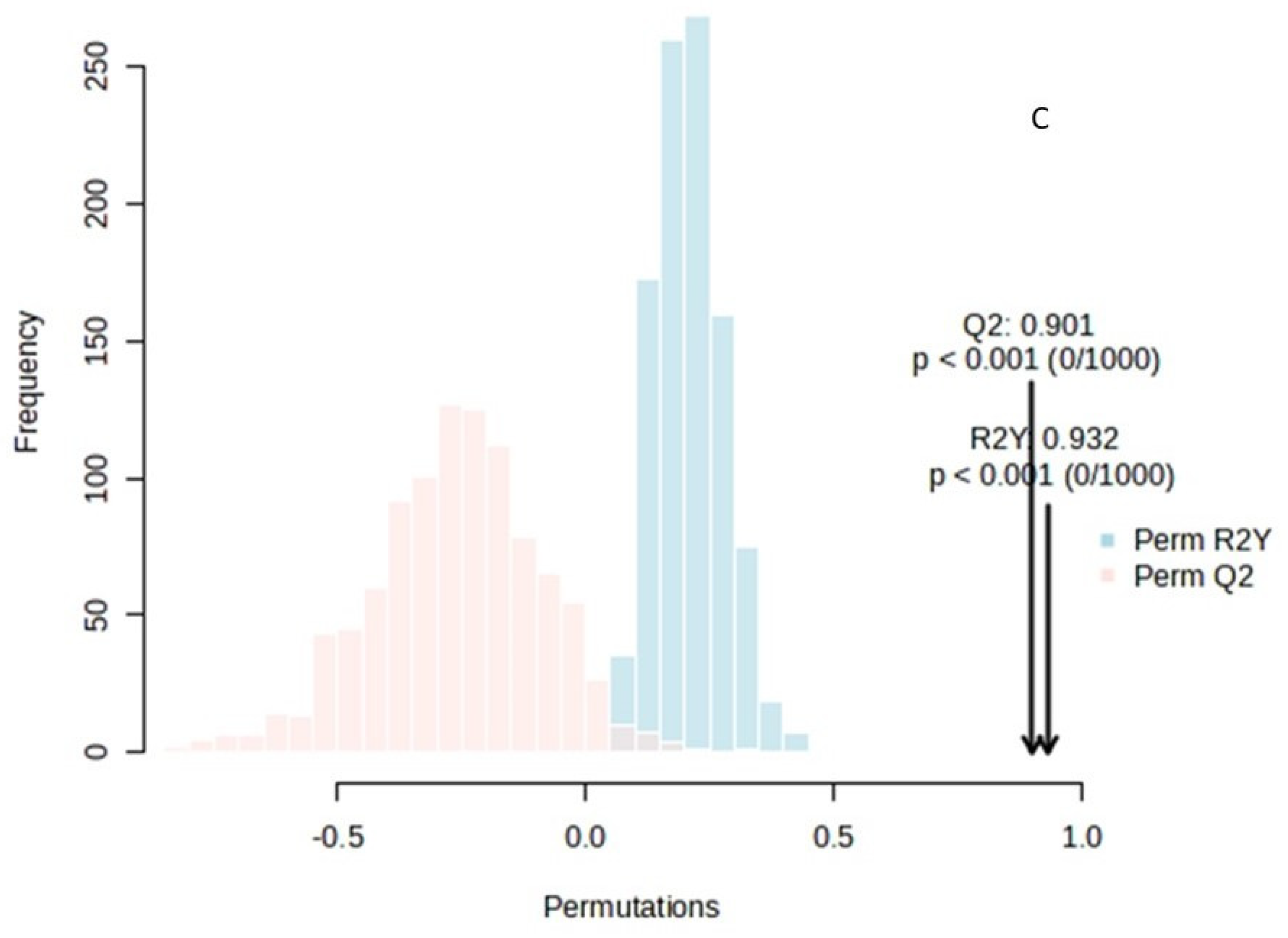

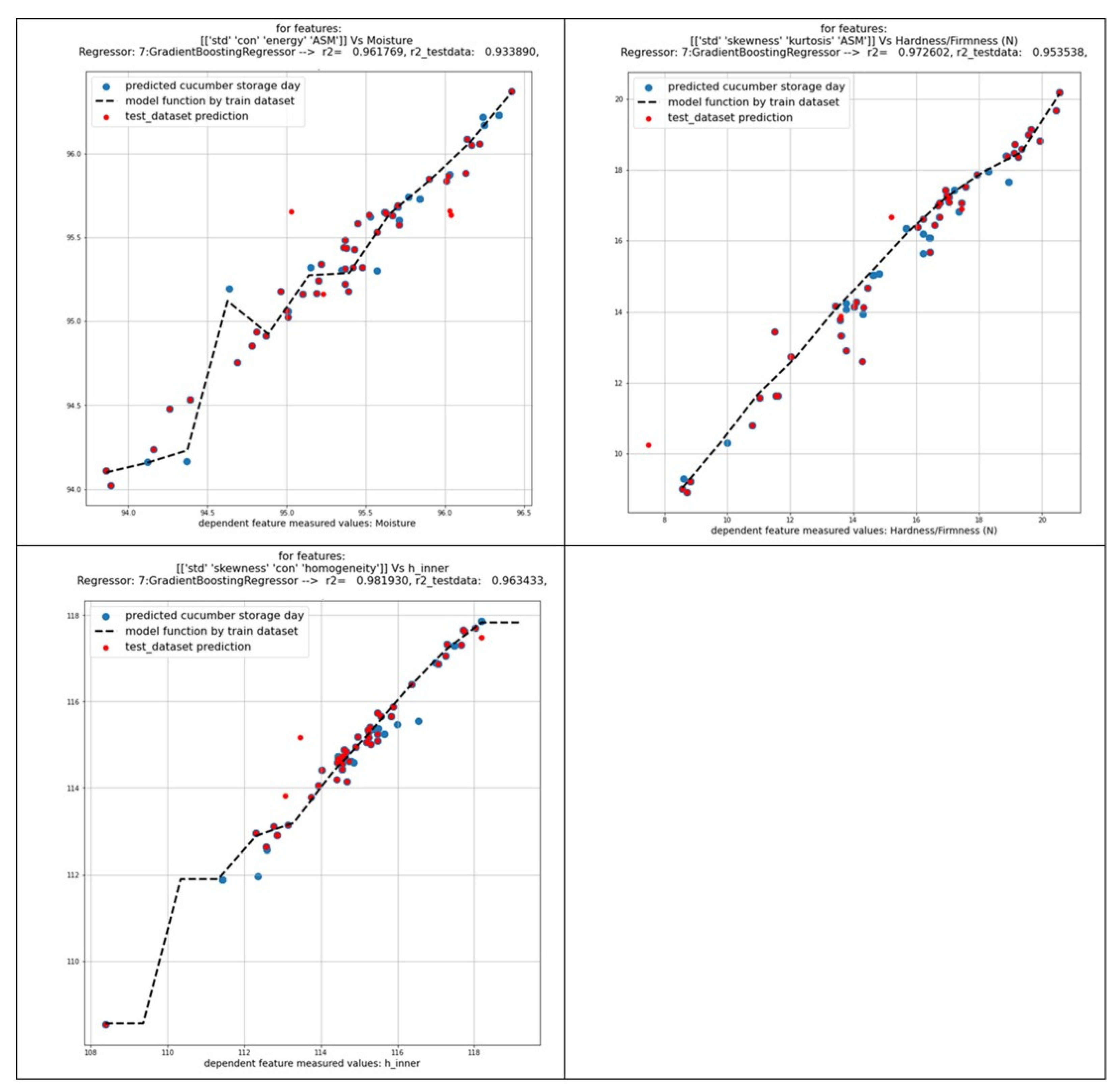
| Day 1 | Day 7 | Day 13 | Day 16 | Day 22 | Day 28 | |
|---|---|---|---|---|---|---|
| L* outer | 31.97 ± 2.04 a | 33.63 ± 1.39 ab | 37.27 ± 3.95 b | 36.58 ± 2.57 b | 42.19 ± 2.12 c | 49.87 ± 2.94 d |
| A* outer | −7.83 ± 1.30 a | −9.45 ± 1.70 a | −11.93 ± 1.97 ab | −12.30 ± 1.17 b | −14.73 ± 1.03 c | −14.99 ± 0.84 c |
| B* outer | 10.39 ± 2.17 a | 14.45 ± 2.13 b | 17.05 ± 3.10 b | 18.02 ± 3.10 b | 26.26 ± 3.16 c | 36.36 ± 3.80 d |
| h outer | 127.27 ± 1.12 ab | 128.16 ± 0.95 a | 124.88 ± 2.10 b | 124.55 ± 1.53 b | 119.04 ± 1.06 c | 112.55 ± 1.82 d |
| Regions (cm−1) | Day 1 | Day 7 | Day 13 | Day 16 | Day 22 | Day 28 |
|---|---|---|---|---|---|---|
| 3334–3338 | 0.869 ± 0.022 a | 0.859 ± 0.033 a | 0.870 ± 0.043 a | 0.853 ± 0.075 a | 0.863 ± 0.032 a | 0.890 ± 0.043 a |
| 2922 | 0.165 ± 0.016 a | 0.218 ± 0.029 b | 0.266 ± 0.021 c | 0.482 ± 0.062 d | 0.431 ± 0.066 d | 0.437 ± 0.076 d |
| 2854 | 0.083 ± 0.007 a | 0.089 ± 0.017 a | 0.135 ± 0.026 b | 0.271 ± 0.022 c | 0.177 ± 0.030 bd | 0.187 ± 0.022 d |
| 1724–1726 | 0.048 ± 0.005 a | 0.054 ± 0.004 a | 0.089 ± 0.010 b | 0.085 ± 0.008 b | 0.087 ± 0.015 b | 0.095 ± 0.010 b |
| 1635–1641 | 0.215 ± 0.004 a | 0.216 ± 0.011 a | 0.215 ± 0.020 a | 0.220 ± 0.014 a | 0.205 ± 0.014 a | 0.212 ± 0.010 a |
| 1546–1552 | 0.014 ± 0.004 a | 0.011 ± 0.003 a | 0.004 ± 0.001 b | 0.003 ± 0.001 b | 0.003 ± 0.001 b | 0.003 ± 0.002 b |
| 1460 | - | - | - | 0.033 ± 0.005 a | 0.030 ± 0.003 a | 0.031 ± 0.006 a |
| 1415–1420 | 0.006 ± 0.002 a | 0.009 ± 0.003 ab | 0.013 ± 0.002 bc | 0.017 ± 0.003 c | 0.010 ± 0.002 a | 0.009 ± 0.002 a |
| 1369–1375 | 0.012 ± 0.002 a | 0.012 ± 0.002 a | 0.012 ± 0.002 a | 0.014 ± 0.002 a | 0.010 ± 0.003 a | 0.011 ± 0.003 a |
| 1317–1319 | 0.011 ± 0.002 a | 0.013 ± 0.002 ab | 0.014 ± 0.002 ab | 0.017 ± 0.003 b | 0.010 ± 0.002 a | 0.010 ± 0.003 a |
| 1234–1245 | 0.021 ± 0.004 a | 0.026 ± 0.004 ab | 0.029 ± 0.003 bc | 0.033 ± 0.005 c | 0.029 ± 0.004 bc | 0.025 ± 0.003 b |
| 1149–1155 | 0.020 ± 0.003 a | 0.028 ± 0.003 b | 0.029 ± 0.002 b | 0.036 ± 0.005 c | 0.025 ± 0.003 b | 0.025 ± 0.003 b |
| 1097–1101 | 0.027 ± 0.004 a | 0.039 ± 0.003 bd | 0.043 ± 0.004 cd | 0.049 ± 0.005 c | 0.040 ± 0.005 bd | 0.035 ± 0.002 b |
| 1055–1058 | 0.018 ± 0.004 a | 0.016 ± 0.003 a | 0.016 ± 0.003 a | 0.020 ± 0.003 a | 0.016 ± 0.004 a | 0.017 ± 0.003 a |
| 1022–1028 | 0.024 ± 0.002 a | 0.034 ± 0.002 b | 0.034 ± 0.004 b | 0.034 ± 0.004 b | 0.026 ± 0.002 a | 0.027 ± 0.003 a |
| 524–534 | 0.008 ± 0.003 a | 0.008 ± 0.002 a | 0.010 ± 0.003 a | 0.007 ± 0.003 a | 0.007 ± 0.003 a | 0.008 ± 0.003 a |
| Day 1 | Day 7 | Day 13 | Day 16 | Day 22 | Day 28 | |
|---|---|---|---|---|---|---|
| TPC (mg GAE/g peel) | 0.12 ± 0.03 a | 0.12 ± 0.01 a | 0.14 ± 0.02 a | 0.20 ± 0.02 b | 0.21 ± 0.01 b | 0.23 ± 0.03 b |
| ABTS (mg Trolox (TE)/g peel) | 0.14 ± 0.02 a | 0.16 ± 0.01 ab | 0.17 ± 0.01 b | 0.22 ± 0.03 c | 0.19 ± 0.02 c | 0.21 ± 0.01 c |
| FRAP (mg Fe (II)/g peel) | 0.12 ± 0.01 a | 0.12 ± 0.00 a | 0.13 ± 0.02 a | 0.16 ± 0.01 b | 0.15 ± 0.02 b | 0.20 ± 0.02 c |
| Day 1 | Day 7 | Day 13 | Day 16 | Day 22 | Day 28 | |
|---|---|---|---|---|---|---|
| aw | 0.9934 ± 0.0028 a | 0.9910 ± 0.0021 ab | 0.9890 ± 0.0019 ab | 0.9885 ± 0.0023 ab | 0.9897 ± 0.0012 ab | 0.9882 ± 0.0018 b |
| Moisture | 96.10 ± 0.22 a | 95.48 ± 0.32 b | 95.34 ± 0.52 b | 95.21 ± 0.38 b | 95.32 ± 0.29 b | 94.44 ± 0.52 c |
| Firmness (N) | 14.87 ± 1.22 ac | 18.07 ± 1.15 b | 17.18 ± 1.58 ab | 18.00 ± 1.75 b | 13.60 ± 1.15 c | 9.03 ± 0.88 d |
| L* inner | 63.34 ± 1.47 a | 68.42 ± 3.09 bc | 71.37 ± 2.47 bd | 68.90 ± 2.01 bc | 66.51 ± 2.45 c | 73.87 ± 2.64 d |
| A* inner | −11.11 ± 0.49 a | −10.48 ± 0.75 a | −9.01 ± 0.69 b | −8.54 ± 0.50 b | −7.28 ± 0.53 c | −7.47 ± 0.73 c |
| B* inner | 21.33 ± 1.06 a | 21.55 ± 1.54 a | 20.02 ± 1.29 ab | 18.25 ± 1.13 bd | 16.17 ± 0.72 c | 17.31 ± 1.42 cd |
| h inner | 117.65 ± 0.39 a | 115.70 ± 0.80 b | 114.87 ± 0.73 bc | 115.06 ± 0.48 bc | 114.27 ± 1.06 bc | 112.40 ± 1.49 c |
Disclaimer/Publisher’s Note: The statements, opinions and data contained in all publications are solely those of the individual author(s) and contributor(s) and not of MDPI and/or the editor(s). MDPI and/or the editor(s) disclaim responsibility for any injury to people or property resulting from any ideas, methods, instructions or products referred to in the content. |
© 2024 by the authors. Licensee MDPI, Basel, Switzerland. This article is an open access article distributed under the terms and conditions of the Creative Commons Attribution (CC BY) license (https://creativecommons.org/licenses/by/4.0/).
Share and Cite
Christodoulou, P.; Ladika, G.; Tsiantas, K.; Kritsi, E.; Tsiaka, T.; Cavouras, D.; Zoumpoulakis, P.; Sinanoglou, V.J. Quality Assessment of Greenhouse-Cultivated Cucumbers (Cucumis sativus) during Storage Using Instrumental and Image Analyses. Appl. Sci. 2024, 14, 8676. https://doi.org/10.3390/app14198676
Christodoulou P, Ladika G, Tsiantas K, Kritsi E, Tsiaka T, Cavouras D, Zoumpoulakis P, Sinanoglou VJ. Quality Assessment of Greenhouse-Cultivated Cucumbers (Cucumis sativus) during Storage Using Instrumental and Image Analyses. Applied Sciences. 2024; 14(19):8676. https://doi.org/10.3390/app14198676
Chicago/Turabian StyleChristodoulou, Paris, Georgia Ladika, Kostantinos Tsiantas, Eftichia Kritsi, Thalia Tsiaka, Dionisis Cavouras, Panagiotis Zoumpoulakis, and Vassilia J. Sinanoglou. 2024. "Quality Assessment of Greenhouse-Cultivated Cucumbers (Cucumis sativus) during Storage Using Instrumental and Image Analyses" Applied Sciences 14, no. 19: 8676. https://doi.org/10.3390/app14198676
APA StyleChristodoulou, P., Ladika, G., Tsiantas, K., Kritsi, E., Tsiaka, T., Cavouras, D., Zoumpoulakis, P., & Sinanoglou, V. J. (2024). Quality Assessment of Greenhouse-Cultivated Cucumbers (Cucumis sativus) during Storage Using Instrumental and Image Analyses. Applied Sciences, 14(19), 8676. https://doi.org/10.3390/app14198676









